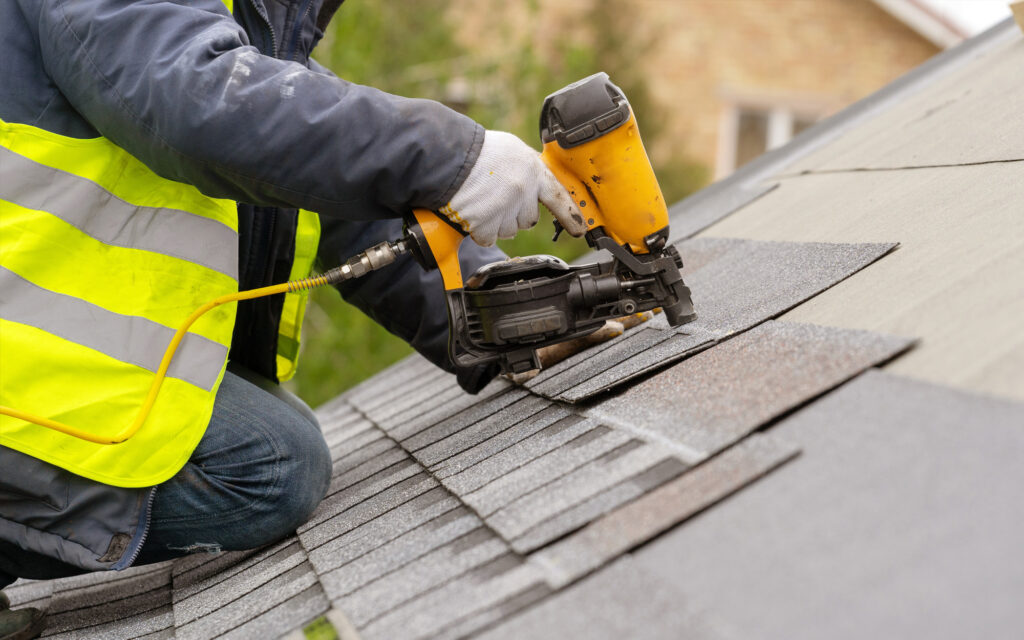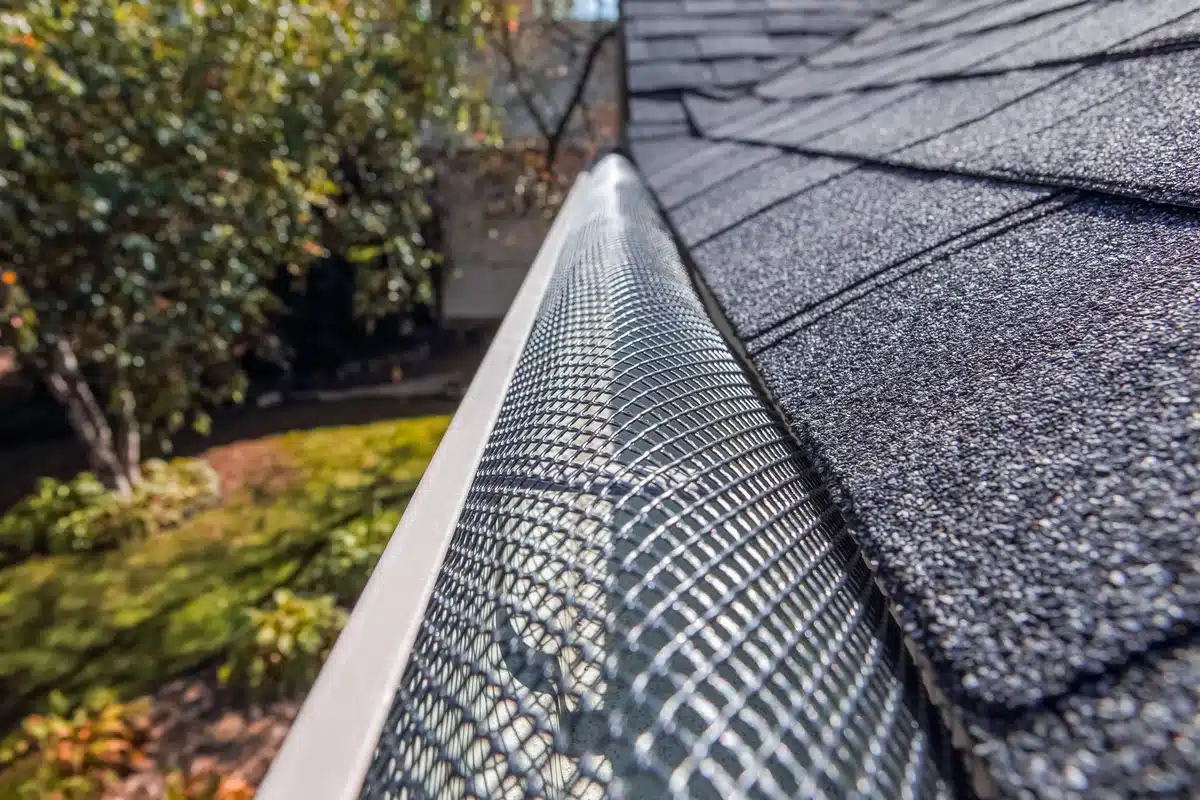Table of Contents
5 Best Gutter Guard Types to Consider in 2024
When you install gutters effectively, you ensure that rainwater doesn’t overflow and cause damage, especially to the foundation. However, the rainwater will not flow safely when you allow all kinds of debris and other elements to block the gutters. Instead, the water accumulates and backs up, placing unnecessary strain on other roof components. This increases the risks of water damage issues like mold and structural damage. 5 Best Gutter Guard Types to Consider in 2024
Luckily, you can use gutter guards to keep the rainwater channels debris-free and ensure that your building remains structurally sound for longer. So, which guards should you get? Read on to know more and make a smart choice. 5 Best Gutter Guard Types to Consider in 2024
1. Screen Guards

The same way you use window and door screens to stop pests and environmental elements from accessing your living space, you can buy gutter guards that function similarly. The guard holes allow water to flow while keeping debris out.
Pros & Cons
Screen gutter guards are generally effective for keeping out larger debris such as leaves, twigs, and branches and work well in surrounded by trees that shed a lot of leaves, especially during the fall season.
However, they may not be as effective in preventing smaller debris like pine needles or seeds from entering the gutter system. In such cases, micro-mesh gutter guards might be more suitable as they can prevent finer debris from getting into the gutters while still allowing water to flow through. 5 Best Gutter Guard Types to Consider in 2024
Still, most homeowners prefer these guards because they are affordable and are suitable for most roofing styles. But, the guards need occasional cleaning to extend their longevity. Also, the sun’s rays can damage these guards, so get another type if your gutters are in direct sunlight or if you live in an area with excessive heat.
2. Foam Guards
Foam gutter guards are designed to fit into gutters, typically covering the entire gutter space. They work well with various gutter types, including K-style gutters and half-round gutters. Foam gutter guards are versatile and can be easily trimmed to fit different gutter sizes, making them a flexible option for many homes.
How It Works
This gutter guard type of covering is usually set inside the gutter and comes with tiny holes that let rainwater flow through. These coverings keep the dirt out (on the top) for easy removal if the build-up isn’t blown away. Foam guards also ensure snow doesn’t accumulate in the gutters. 5 Best Gutter Guard Types to Consider in 2024
Their design allows water to flow through while keeping debris like leaves and twigs on the surface, preventing clogs. However, similar to screen gutter guards, foam gutter guards might not be as effective against finer debris like pine needles or seeds. Over time, they can also accumulate debris on their surface, requiring occasional roof and gutter maintenance. 5 Best Gutter Guard Types to Consider in 2024
These guards are easy to install and maintain, and they don’t void the roof warranty. However, they can promote moss growth when used in areas that experience lots of precipitation.
3. Perforated Guards

Get perforated metal guards if you want the best coverings to keep leaves at bay. These covers have big holes that promote better water flow but cannot catch the small debris. Perforated guards are a solid choice for people living in snowy and rainy areas because they promote efficient water flow. They also last longer and require minimal care. 5 Best Gutter Guard Types to Consider in 2024
This gutter guard type is typically compatible with various gutter types, including K-style gutters and half-round gutters. 5 Best Gutter Guard Types to Consider in 2024
4. Reverse Curve Guards
These guards are an excellent choice for homeowners who need gutter coverings that can withstand time’s tests without skimping on performance. They use plastic or metal and have a solid design. The curved design allows water to run on and flow into the trenches via some openings. 5 Best Gutter Guard Types to Consider in 2024
If your roofing accumulates different forms of debris, get these guards. Thanks to the design, the debris and leaves usually fall to the ground, minimizing the probability of having clogged gutters. You don’t have to worry about pests and birds since the openings are too tiny to let them through. However, you have to be ready to pay more for the installation. Also, avoid these guards if you experience frequent rainstorms. 5 Best Gutter Guard Types to Consider in 2024
This gutter guard type is often best installed on various types of gutters, including K-style gutters, half-round gutters, and even box gutters. 5 Best Gutter Guard Types to Consider in 2024
5. Brush Guards

Another affordable guard you may install is the brush guard that catches all debris forms with the bristles. Usually, the bristles are in an upright position, so only water will pass through. Brush guards are easy to install and require minimal upkeep compared to other designs.
Before you buy brush guards, you should know that they don’t catch all debris and will get blockages over time. You will need to take them out to remove the residue before placing them back. If you cannot clean them periodically, choose another type.
Brush gutter guard types are versatile and can be used with various gutter types, including K-style gutters and even some specialty gutters.
The Best Gutter Guard Types for Your Gutters
Now that you know about various gutter guards, as well as their pros and cons, you can make an educated choice for the best gutter guard types for your specific gutter and roof.
If you’re still scratching your head, or just can’t decide, reach out to a professional for insight.
You can always rely on Tectum Roofing for tips on style, installation, maintenance, and more. If you need expert advice on gutter guard types or general roofing services, our team of professionals is always happy to help.
5 Best Gutter Guard Types to Consider in 2024
When you install gutters effectively, you ensure that rainwater doesn’t overflow and cause damage, especially to the foundation. However, the rainwater will not flow safely when you allow all kinds of debris and other elements to block the gutters. Instead, the water accumulates and backs up, placing unnecessary strain on other roof components. This increases the risks of water damage issues like mold and structural damage.
Luckily, 5 Best Gutter Guard Types to Consider in 2024 can help keep the rainwater channels debris-free and ensure that your building remains structurally sound for longer. So, which guards should you get? Read on to know more and make a smart choice.
1. Screen Guards
The same way you use window and door screens to stop pests and environmental elements from accessing your living space, you can buy gutter guards that function similarly. Screen guards are one of the 5 Best Gutter Guard Types to Consider in 2024, as they allow water to flow while keeping debris out.
Pros & Cons
Screen gutter guards are generally effective for keeping out larger debris such as leaves, twigs, and branches. They work well in areas surrounded by trees that shed a lot of leaves, especially during the fall season.
However, they may not be as effective in preventing smaller debris like pine needles or seeds from entering the gutter system. If finer debris is a concern, micro-mesh gutter guards may be a better choice.
Most homeowners prefer these guards because they are affordable and suitable for most roofing styles. But the guards need occasional cleaning to extend their longevity. Additionally, if your gutters are in direct sunlight or you live in an area with excessive heat, the sun’s rays can damage these guards.
2. Foam Guards
Foam gutter guards, another of the 5 Best Gutter Guard Types to Consider in 2024, are designed to fit snugly into gutters, covering the entire space. They work well with various gutter types, including K-style and half-round gutters.
How It Works
This type of gutter guard sits inside the gutter and features tiny holes that let rainwater flow through while keeping dirt out. Foam guards also prevent snow from accumulating in the gutters, making them a versatile choice.
Foam guards are easy to install and maintain and don’t void roof warranties. However, they can promote moss growth in areas with heavy precipitation, and they may not effectively block finer debris like pine needles.
3. Perforated Guards
Perforated metal guards rank high among the 5 Best Gutter Guard Types to Consider in 2024 for their durability and effectiveness. These covers have large holes that allow efficient water flow while blocking leaves and larger debris.

Why Choose Perforated Guards?
These guards are ideal for snowy and rainy areas because they promote better water flow and require minimal maintenance. They are also compatible with various gutter types, including K-style and half-round gutters.
4. Reverse Curve Guards
Reverse curve guards are one of the most efficient options in the 5 Best Gutter Guard Types to Consider in 2024. Made of metal or plastic, these guards feature a curved design that allows water to flow directly into the gutters while debris falls to the ground.
Key Benefits
If your roof accumulates different types of debris, reverse curve guards minimize the risk of clogs. Their tiny openings also prevent pests and birds from entering the gutters. However, they come with higher installation costs and may not be suitable for areas with frequent heavy rainstorms.
5. Brush Guards
Brush guards are another affordable and effective choice in the 5 Best Gutter Guard Types to Consider in 2024. They feature upright bristles that catch debris while allowing water to flow through.
What to Know About Brush Guards
These guards are easy to install and require minimal maintenance. However, they don’t catch all debris and may lead to blockages over time. If you cannot clean them periodically, you might want to consider a different option.
Brush guards are versatile and work well with various gutter types, including K-style gutters.
The Best Gutter Guard Types for Your Gutters
Now that you know about the 5 Best Gutter Guard Types to Consider in 2024—along with their pros and cons—you can make an informed decision to protect your home’s gutters.
If you’re still unsure about which option is best for your home, consult a professional for expert advice.
Get Expert Help From Tectum Roofing
At Tectum Roofing, we know how important it is to choose the right gutter guard. Whether you need tips on installation, maintenance, or style, our team can help you select from the 5 Best Gutter Guard Types to Consider in 2024.
Reach out to us today for expert advice and ensure your gutters remain in top condition all year long.



